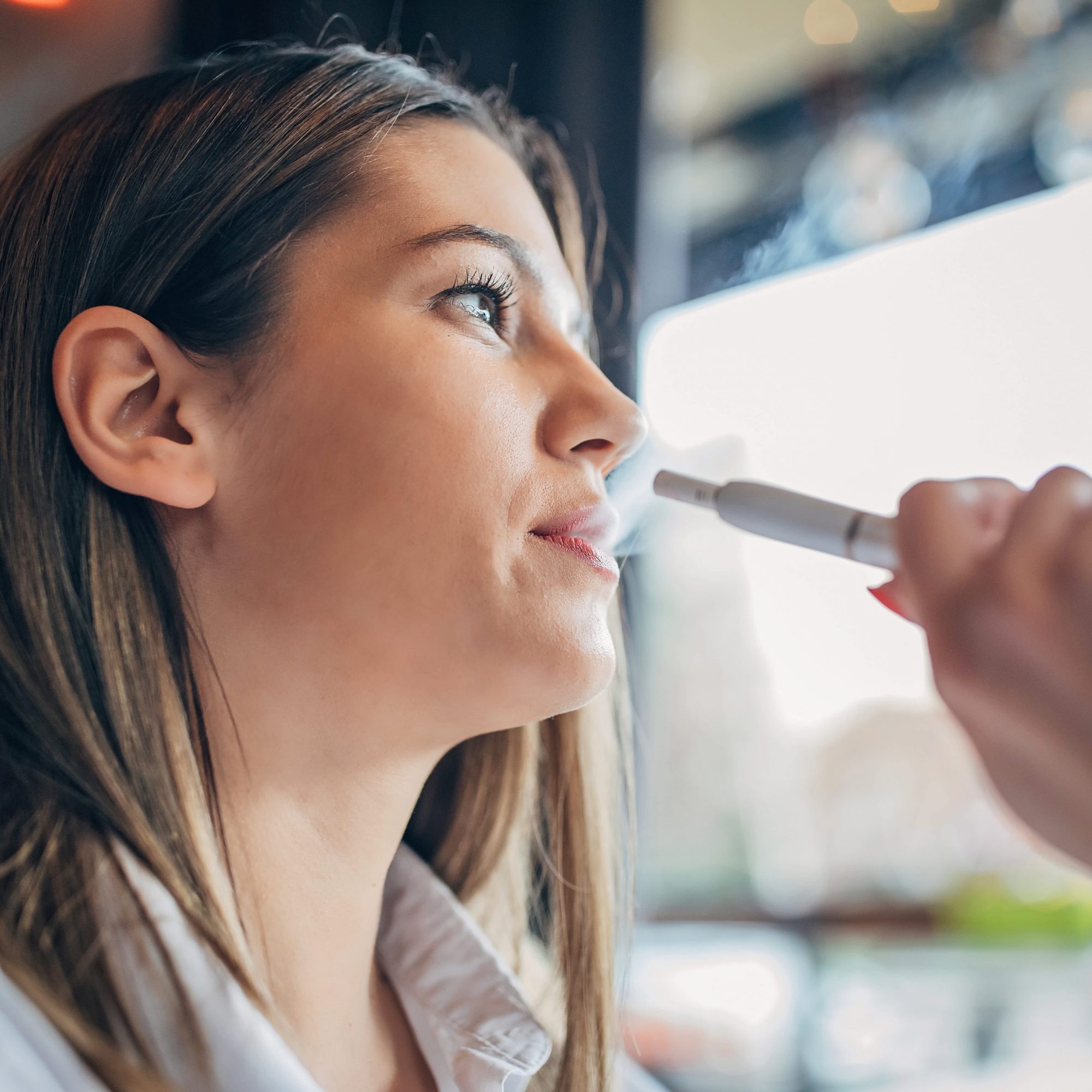
- POPSUGAR Australia
- Fitness
- What Exactly Is In a Vape? Here’s What You’re Inhaling
What Exactly Is In a Vape? Here’s What You’re Inhaling


POPSUGAR Australia has partnered with Queensland Health to help you get the facts you need on vaping.
It seems like we switched overnight from the occasional ciggie after a few too many cocktails to choofing a little lipstick-like vape 24 hours a day.
The pearly-coloured tubes and the candy flavourings make the devices seem innocent enough, and for many, they seem like the perfect accompaniment to a night out.
And why not? We know how bad cigarettes are for you, surely these things can’t be nearly as bad, right?
Well, not so much.
We spoke with two experts in the field to find out exactly what you’re inhaling when you pick up any vape and the risks you’re likely exposing yourself to.
The Issue With Vaping
The thing with vaping is that we really don’t have the evidence to say exactly what these devices are doing to you. With cigarettes, we’ve got decades of data showing exactly how burning tobacco smoke causes emphysema, bronchitis, and various cancers. With vaping, it’s a relatively new practice and so we’ve not been able to do the work on what the long-term consequences are. The early evidence we do have, however, isn’t great.
Before we get into it, there are a couple more points to make. Vapes contain nicotine — sometimes even those labelled as nicotine-free — and, although the same laws that apply to cigarettes in Queensland also apply to vapes, the lack of visible vapour and detectable smell has made some people more comfortable using them indoors and in public spaces, despite these laws.
This means some people are using them more often, and therefore, the level of nicotine you’re consuming is likely to be far higher, overall, than if you smoked a few cigarettes across a day or a week. Given that nicotine is one of the most addictive substances on the planet, developing a vaping habit might turn into more than just a short-term thing. Those who pick it up are three times more likely to go on to smoke traditional cigarettes — and we all know the health risks associated with smoking cigarettes.
What’s Actually In a Vape
When we polled the POPSUGAR Australia Instagram audience to find out how much they knew about vaping, the results were clear, with 87% of respondents admitting they do not know what’s actually in a vape — and a similar amount said they were concerned about the long-term impact of vaping.
Okay so, Professor Emily Banks is kind of the head honcho when it comes to vaping. She and her team at the Australian National University compiled one of the most comprehensive studies on vaping the world has ever seen. The results? Not great.
“Vapes heat an e-liquid which contains propylene glycol and vegetable glycerine, as well as flavours,” she told POPSUGAR Australia.
“Most contain nicotine in the form of nicotine salts. There have been toxicological reviews of the ingredients in e-cigarettes and the non-nicotine elements are similar between disposable and non-disposable products.”
Her research found 243 unique chemicals in vape clouds, 38 of which are listed poisons. 27 chemical reaction products — created through the process of vaping e-liquid — were also identified. These included things like acetaldehyde, acetone (commonly found in nail polish remover), acrolein and formaldehyde (used in morgues), all of which have been associated with adverse health outcomes in humans.
Another study from Curtin University on 65 Australian vape liquids, found that all of them contained one or more potentially harmful chemicals.
According to Banks, “for the vast majority of important health outcomes, the impact of e-cigarettes is not known. It is therefore not possible to establish with certainty whether the use of e-cigarettes is safer than tobacco smoking or not”.
“Even if e-cigarettes were found to be safer than this highly harmful exposure, this would not constitute evidence of safety in absolute terms,” she adds.
Professor Nick Zwar, Executive Dean of Health Sciences and Medicine at Bond University, told POPSUGAR Australia that there are gaps in the regulation of disposable vapes, which makes it very hard to say what’s in them.
“Ingredients of disposable vapes vary considerably and the description on the product is often inaccurate,” Zwar said.
They contain a range of flavouring agents and there is some evidence to suggest these can have effects on our health — in fact, for nicotine vaping products, the Therapeutic Goods Administration has banned some chemicals used for flavouring.
“Many also contain a cooling agent called WS-23 which reduces the irritant effect of high concentrations of nicotine,” said Zwar. “No disposable vape would be likely to meet the Therapeutic Goods Administration standards for nicotine vaping products,” said Zwar.
Given we’re really not sure exactly what you’re inhaling, and the information that we do have on what’s likely in those little tubes, it’s best to quit while you’re ahead.
To find more information on the health impacts of vaping (and to read more about the ingredients listed above), head to the Vape Truths website.



